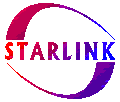 DAOPHOT - Stellar Photometry Package
DAOPHOT - Stellar Photometry Package
DAOPHOT is a package for stellar photomoetry
designed to deal with crowded fields.
The package supported by Starlink,
DAOPHOT II: The Next Generation
was written by Peter Stetson at the Dominion Astrophysical Observatory.
The current version, available on the most recently released Starlink CD-ROM
(early 2002) is v1.3-2.
The package performs various tasks including finding objects,
aperture photometry, obtaining the point spread function
and profile fitting photometry.
Profile fitting in crowded fields is performed
iteratively which improves the accuracy of the photometry.
Documentation
The following materials are available:
- SUN/42:
DAOPHOT - Stellar photometry package
- Introductory document.
- MUD/9 - DAOPHOT II User's Manual
- Detailed manual - Postscript file only.
- Source code
- Hypertext version of package source files for perusal.
- Running DAOPHOT from a script
- Some tips on how to do automated DAOPHOT processing in Unix.
Latest version
The current version of DAOPHOT, v1.3-2, offers the following improvements
on the previously released version (v1.2, released on the Spring 2000 CD):
- Many of the static limits compiled into DAOPHOT have been removed.
The programs will now adjust to the size of the image to which
they are asked to attach. It is still possible to receive an error
about having too many stars in a file; in this case use the OPTIONS
command to adjust the value of the new parameter MS (maximum stars
in file) to a high enough value.
Note that the limit on the number of stars within a group for
NSTAR or ALLSTAR, and a few other hard limits, still exist.
- The code has been fixed so that NDF images with pixel indices not
starting at (1,1) can be processed properly. Previously only a
sub-block of any such image was being examined.
- In conjunction with the
NDF
library and the
CONVERT
utilities,
foreign data formats may now be used with DAOPHOT, being translated
on the fly. See
SSN/20
for details (or if CONVERT is installed
just start the package up by typing `
convert'
and use of most foreign
data formats will be available automatically).
A consequence of these changes may be to fix certain unexpected or
incorrect behaviour previously exhibited by the programs.
Support
- Obtaining the code
- As with other Starlink code, copies of DAOPHOT built for Solaris,
Compaq Tru64 Unix, and Red Hat Linux can be obtained from the
Starlink
Software Store.
- Feedback
- Any bug reports, comments or queries should be mailed to
daophot@star.rl.ac.uk.

Mark Taylor, Institute of Astronomy, Cambridge, UK
daophot@star.rl.ac.uk
